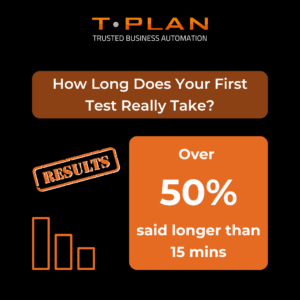Agile and DevOps are probably the two most popular methodologies adopted in software development in today’s tech world. While both seek to engage more effective collaboration and accelerate the development process, they differ in how they approach the task. But which one should you use? Agile focuses on rapid, incremental delivery of a functional product, whereas DevOps integrates IT and development operations using automation to streamline product delivery.
To determine which is best for your team, it’s very important to understand how each approach differs and how they align with your project’s specific needs and goals. In this guide, we’ll break down Agile and DevOps, their specific advantages, and how to decide which methodology (or combination of both) is the right fit for your business.

Table of Contents
What is Agile?
Agile development has become one of the most popular software development methodologies. It’s especially well-suited for projects where the requirements tend to shift as the project evolves. Why? Because at its core, Agile represents flexibility, iterative progress, and constant communication between teams and stakeholders. Unlike the old ways – rigid, traditional project managing that struggled to adapt to changes – Agile aims to break free from these constraints. The Agile Manifesto, laid down in 2001, set down guiding principles that form the basis of collaboration, continuous feedback, and adaptive planning.
What is DevOps?
While Agile focuses on development and how teams adapt to changes, DevOps goes a step further. It brings a laser-sharp focus on the automation of the entire pipeline of software delivery. Whereas Agile puts great emphasis on the development aspects, DevOps connects development and operations, seamlessly bridging the gap from the creation of code to its deployment. The key component of this is Continuous Integration (CI) and Continuous Delivery (CD)— DevOps automates these processes such that the code gets tested and is ready for release with a minimum. DevOps is more than a set of practices – it represents a cultural shift, where emphasis is placed on fixing bugs early in the process.
Why you need to understand both
Why should you care about both Agile and DevOps? Because doing this can transform your software delivery process. While targeting different lifecycle stages, Agile and DevOps are extremely complementary to each other. Agile does an excellent job of accelerating development by focusing on small cycles of iterations. DevOps, on the other hand, ensures those iterations get deployed quickly and efficiently. This powerhouse combination integrates continuous user feedback at every step and improves with each iteration.
The Most Significant Differences Between Agile and DevOps
Although Agile and DevOps set common goals, for example, improving the process of development, the way in which these goals are achieved is different. For example:
Agile Development: Focus on Iterative Progress
Iterative Approach: Agile is built on the concept of iterative progress. Teams work in short cycles (sprints) where they develop, test, and deliver small pieces of functionality. After each sprint, they gather feedback and refine their work, which allows for constant adaptation to user needs or market changes. This is especially beneficial for projects with evolving requirements, where flexibility is key.
Team Collaboration: In Agile, collaboration within small, cross-functional teams is paramount. Developers, testers, and business stakeholders work closely together throughout the development cycle. This structure encourages frequent communication, allowing teams to make quick decisions and respond to issues before they escalate.
DevOps: Bridging Development and Operations
End-to-End Automation: DevOps, in contrast, has a complete focus on automation of the pipeline, right from development to deployment. While Agile stressed rapid iteration, DevOps ensures that the iteration is seamlessly delivered via CI/CD pipelines. Automation tools test and deploy the code with no human mediation, therefore reducing the risk of errors and accelerating the release cycles.
Collaboration Across Departments: While Agile promotes close collaboration amongst a single team, either in development, operations, or even security, DevOps actually encourages collaboration across these departments. Cross-departmental collaboration assures not only that development gets faster but also that the developed software is ready to be effectively deployed and maintained.
Critical Considerations for Choosing Between DevOps and Agile
So, the important question – which is best for your project, Agile or DevOps? The choice you make is really going to depend mostly upon the goals, structure, and requirements of your project. Each has points of strength, so the right choice, or a blend of the two, will be found by meticulously understanding the specific needs of your project.
Project Scope and Goals
- Agile Development: In projects where requirements continuously change, and quickly, Agile is best suited. If your product needs to evolve through continuous feedback – either from a QA team, or from your client, Agile’s iterations are in a position to allow flexibility and quick adaptation, making it ideal for startups or new product launches when you’re still trying to figure your way around the best direction. In contrast to older methods of project management which sometimes struggle to adapt to fast, frequent changes, the Agile methodology will allow a far more seamless development process and ultimately produce a better end product.
- DevOps: If your project requires frequent, reliable releases, particularly in environments where downtime is just not an option, DevOps is the ideal approach. DevOps practices automate the processes of deployment, testing, and monitoring, enabling continuous integration and continuous delivery (CI/CD). This automation ensures that the software remains in a constant cycle of updates and deployments, reducing the risk of human error and enhancing overall system stability. As a result, teams can maintain high levels of uptime while quickly addressing bugs and delivering new features without disrupting the user experience.
Team Structure and Collaboration
- Agile: Works best in small cross-functional teams where direct communication and day-to-day stand-ups are drivers of progress. If the teams are small and the decisions need to be taken fast, Agile is likely the ideal choice.
- DevOps: DevOps thrives in environments where large teams have to collaborate amongst each other across department silos. If your teams are compartmentalised into development, operations, and testing; DevOps ensures all of the departments collaborate in providing reliable production software
Technology and Tooling
- Agile Development: Agile heavily relies on collaboration and project management tools like Jira and Trello. Such tools will help make sure that the progress of tasks is tracked and taken into account within sprints.
- DevOps: DevOps depends on automation tools like Jenkins, GitLab CI, or Docker to manage the continuous integration and deployment pipeline. These tools help automate the testing and release processes, making it easier to deploy code quickly and reliably.
Implementing a Strategy: When to Use DevOps or Agile (or both)
The decision of Agile over DevOps or DevOps over Agile often depends on the needs of the project. Both have unique strengths, and many organisations and projects find success by combining the two.
Agile for Flexibility
If your organisation values flexibility and quick adaptation to customer feedback, Agile is the right choice. Agile’s iterative nature allows teams to release early and often, gathering feedback from customers or clients and adjusting in real-time.
DevOps for Scalability
For teams that need to scale quickly and deliver software at a high velocity, DevOps is the way to go. The focus on automation and continuous delivery ensures that software is always ready to deploy, reducing the risk of bottlenecks during release cycles.
Combining DevOps and Agile
Most organisations find a hybrid approach suitable. Agile’s sprint-based development can be combined with DevOps’ automated testing and deployment pipelines. It combines the best of both worlds: rapid development with the assurance that the quality and reliability of software developed can be improved.
Challenges and Solutions in DevOps and Agile Development
Both Agile and DevOps confer very tangible benefits but also introduce challenges that must be overcome to achieve success.
Balancing Speed and Quality
The rapid iterations of Agile can sometimes rush the work, and the automated pipelines of DevOps can sometimes push code to production without even trying it.
Solution: Robust automated testing tools, such as those provided by T-Plan, can help teams maintain speed without sacrificing quality. By integrating continuous testing into both Agile and DevOps workflows, teams can catch issues early and reduce the risk of production bugs.
Tool Integration
Managing all those different tools at each phase-development, test, and operations-can become cumbersome, especially in larger organisations.
Solution: T-Plan’s automation solutions are designed to integrate seamlessly with existing tools, streamlining the workflow and reducing friction between Agile and DevOps practices.
Benefits of DevOps and Agile Development
Enhanced Flexibility and Responsiveness
- Agile Development: Agile’s iterative approach to software development allows teams to quickly accommodate new requirements or feedback, especially in environments where flexibility is paramount.
- DevOps: DevOps takes flexibility a step further by enabling continuous delivery, allowing teams to push
Improved Efficiency and Speed
Both methodologies aim to increase the speed of development and delivery. Agile ensures efficiency in the development cycles, and DevOps automates the testing and deployment of software so that it moves down the pipeline at the best speed possible.
Higher Product Quality
By incorporating continuous testing and feedback loops, Agile and DevOps both help ensure that high-quality software is delivered to users DevOps achieves this by its focus on automation, reducing human error; on the other hand, Agile’s user-centric approach ensures that the product will meet customer needs.
Leveraging T-Plan for DevOps and Agile Success
T-Plan provides essential tools for organisations looking to integrate Agile and DevOps practices. By supporting both methodologies, T-Plan ensures that your team can automate testing, streamline collaboration, and deliver high-quality software efficiently.
Comprehensive Testing Support: T-Plan offers automation solutions that fit seamlessly into both Agile sprints and DevOps pipelines. With T-Plan, your team can continuously test and deliver software without compromising quality.
Seamless Integration with Existing Workflows: T-Plan integrates smoothly with tools like Jenkins and Jira, making it easy for your team to incorporate automation into your existing Agile and DevOps workflows.
Conclusion
DevOps and Agile each offer unique advantages depending on your project’s needs. Agile excels in adaptability and user-centric development, while DevOps shines in automating and scaling software delivery. Understanding when to apply each methodology—or a combination of both—can significantly enhance your software development process, leading to better products and faster delivery.
T-Plan’s tools and solutions support both methodologies, ensuring that your development process is efficient, collaborative, and adaptable. We’re offering a free trial of T-Plan Robot, which you can check out using the link below:


